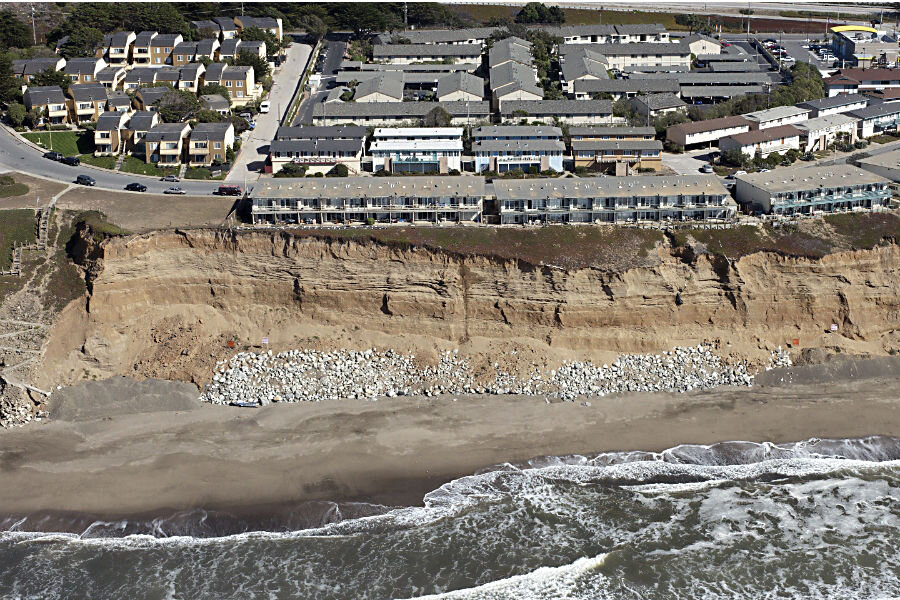Living on the edge: Residents of crumbling Pacifica cliffs are 'fighting time'
Loading...
Eighty feet above the Pacific Ocean, residents living atop the Pacifica cliffs have long enjoyed their beautiful backyard sights – whale watching, dolphin sightings, and of course, magnificent sunsets.
But when living in fragile proximity to nature, there are caveats: For years, the cliffs have crumbled under erosion, forcing tenants to move elsewhere. And this year’s El Niño storms will no doubt exacerbate the collapsing bluffs, driving even more people out of their homes.
"What do they say about nature? It's a relentless march," Jackie James, who occasionally resides at an ocean-view apartment with her fiancé, told the Associated Press. Their home is still safe to live in, but that’s not the case for Gordon King and his wife, who have been forced out of their apartment and are now scrambling to find viable housing options.
"Some of us tried squatting on the first night and almost got arrested," the disabled Vietnam vet told AP. "We've been fighting time.”
Michael McHenry, an addiction recovery coach, is in the same boat. He had just moved into his one-bedroom oceanfront apartment for four months before he was told to leave.
"I'm going to keep fighting," he said. "I don't couch surf nor will I let the city dump me in a homeless shelter to get me to go away."
Knowing the the nature of the crumbling cliffs, he expected to move someday if the apartment were deemed unsafe. As aerial photographs from the California Coastal Records Projects indicate, the cliffs have been crumbling for decades.
But he was surprised at how soon it became a problem. "I thought I had a year," he said.
According to Patrick Barnard, a coastal geologist for the US Geological Survey, the Pacifica cliffs 10 miles south of San Francisco are one of the two California coastline stretches most vulnerable to erosion. Rising sea levels have sped up the process, and over the next century, more and more of the coastland will be exposed to wave attack and deterioration.
While sediment from watersheds has sustained the beaches and protected the cliffs in the past, Mr. Bernard said, it’s been drastically undermined by human activity like damming, dredging, and flood control.
Two apartment buildings were evacuated in 2010, and last month, residents of another apartment complex and two homes were forced out during the El Niño storms. Soon, other properties will face the same fate.
Still, the risk is somewhat mitigated by the beauty of its location.
"We're not fearful of falling off. They've been so diligent that they are going to tell us if we are in any imminent danger," said Sonja Thompson, who lives in an oceanfront apartment with her wife, Karlie.
"The paragliders, they are so close you can almost high five them," she told AP.
This report contains material from the Associated Press.








